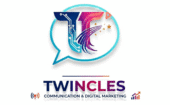In a digital landscape crowded with static articles, standard images, and one-way videos, interactive content has emerged as a game-changer. It doesn’t just catch the eye—it invites the user to engage. More importantly, interactive content has been shown to significantly increase conversions, boost dwell time, and build deeper brand trust.
Whether you’re a digital marketer, content creator, or business owner, understanding how to create effective interactive content can transform your strategy. In this post, we’ll walk through the importance of interactive content, types that work best, and how to create content that actually converts.
Why Interactive Content Works
Unlike static content, interactive elements actively involve users. This interaction provides value in real-time—whether it’s answering a quiz, exploring an interactive infographic, or using a product configurator. This engagement creates a two-way experience, which leads to:
– Higher engagement rates
– Improved user experience
– Increased lead generation
– Better data collection and personalization
According to a Demand Gen report, interactive content generates 2x more conversions than passive content. Why? Because users feel invested—they’re not just reading; they’re participating.
Top Types of Interactive Content That Converts
Let’s look at the most effective types of interactive content and how they can help you drive conversions:
1. Quizzes & Assessments
These are fun, personal, and addictive. Whether it’s “Which product is right for you?” or “What’s your marketing style?”, quizzes personalize user experience and guide them to tailored solutions—perfect for soft selling.
Conversion Tip: End your quiz with a personalized result and a strong call-to-action (CTA) like “Download Your Report” or “Get My Custom Plan.”
2. Calculators
Financial calculators, ROI tools, or cost estimators provide instant value. They help users make decisions while subtly positioning your product or service as the solution.
Conversion Tip: Require an email to send detailed results, but make sure the value is clear before the gate.
3. Polls & Surveys
Polls engage users by making them feel heard. They’re also a great way to collect insights for further content or product development.
Conversion Tip: Use a follow-up CTA based on their poll answer. For example, “You prefer working remotely? Here are tools that suit your style.”
4. Interactive Infographics
Traditional infographics are informative, but interactive ones allow users to click, explore, and uncover information at their own pace. This boosts retention and shareability.
Conversion Tip: Include clickable hotspots that lead to landing pages, product pages, or deeper blog content.
5. Interactive Videos
These allow viewers to choose their path, answer questions, or explore product features. They’re more engaging than traditional videos and ideal for complex storytelling or product education.
Conversion Tip: Use decision points to segment users and direct them to relevant CTAs or offers.
Steps to Create Interactive Content That Converts
Now that you know the formats, let’s break down the process to create interactive content that gets results:
1. Define Your Conversion Goal
Before anything else, be clear about what you want users to do. Is it:
– Subscribing to a newsletter?
– Downloading a guide?
– Booking a demo?
– Making a purchase?
Your goal will influence the type of interactive content you create and how you structure the user journey.
2. Know Your Audience
Understand their challenges, preferences, and what motivates them to act. Interactive content must offer something valuable and relevant. Conduct surveys, use analytics, and build user personas to guide your strategy.
3. Choose the Right Type of Interactive Format
Not all formats suit every funnel stage. For example:
– Top of the funnel: Quizzes, polls, and infographics
– Middle of the funnel: Calculators, assessments, and videos
– Bottom of the funnel: Product configurators, ROI tools
Match the format with the user’s intent.
4. Use a User-Friendly Design Tool
Creating interactive content doesn’t require coding. Tools like:
– Outgrow (quizzes, calculators)
– Typeform (forms, surveys)
– Ceros (interactive infographics)
– Involve.me (funnels, quizzes)
– ThingLink (interactive media)
…can help you create engaging experiences with drag-and-drop interfaces.
5. Focus on User Experience (UX)
Make your content intuitive, mobile-friendly, and visually appealing. Avoid clutter and provide clear navigation cues. Also, ensure your content loads quickly—engagement drops drastically if there’s any lag.
6. Include Strong CTAs Throughout
Don’t wait till the end—insert calls-to-action at strategic points. These could include:
– “See Your Results”
– “Claim Your Discount”
– “Start Your Free Trial”
A/B test different CTA copy and placements to see what works best.
7. Promote Your Interactive Content
Once created, treat your interactive asset like a product:
– Embed it in your blog posts
– Share it on social media
– Use it in email marketing
– Run paid campaigns around it
Interactive content typically gets more shares, so leverage that for organic reach too.
8. Analyze and Optimize
Use analytics to track:
– Completion rates
– Time spent
– Conversion rate
– Drop-off points
This data is gold. It helps you understand user behavior and refine your content for better results.
Bonus: Combine Interactivity With Personalization
When you blend interactivity with personalized recommendations or messaging, conversion rates soar. Think about quizzes that recommend specific products, or calculators that suggest plans based on input. Personalized interactive content creates a feeling of exclusivity and relevance, which drives action.
Final Thoughts
Interactive content isn’t just a trendy tactic—it’s a powerful conversion engine. It gives users what they want: engagement, value, and personalization. Whether you’re aiming to collect leads, drive sales, or simply educate your audience more effectively, interactive content should be part of your core strategy.
Start small—maybe a quiz or a simple calculator. As you see results, scale your efforts and explore more immersive formats. The digital world rewards creators who can engage, not just inform.
